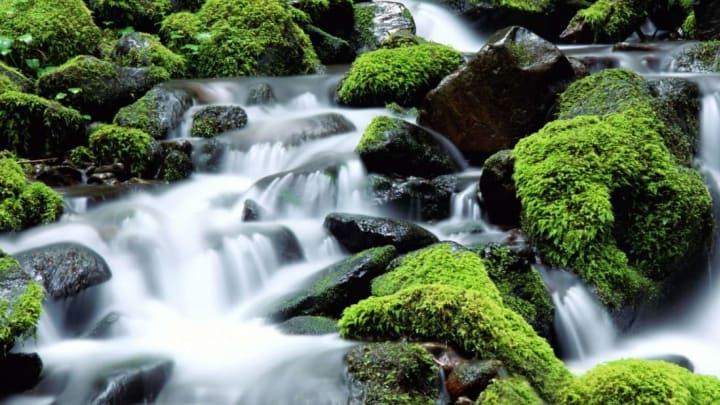That forest sounds playlist you use to drown out street noise might be doing more for your health than you realize. A new study has found that listening to nature sounds, like those heard in national parks, can relieve stress and even alleviate pain.
Researchers from Carleton University, Colorado State University, and Michigan State University teamed up with the National Park Service to analyze 18 previous studies on how natural soundscapes can affect human health. Their results, published in Proceedings of the National Academy of Sciences, suggest that listening to nature-made noise may decrease pain and stress, improve cognitive function and mood, and more. The research even sheds light on what sounds might bring about specific benefits; soundscapes that included birds, for example, had the largest effect on lowering stress and annoyance.
Why we respond well to certain natural sounds isn’t totally clear, but people have theories. It’s possible that we’re drawn to water sounds because we need water to survive—so knowing we’re near a water source has calming effects. We might also consider nature sounds to be less threatening than the cacophony of human-made noise.
The researchers then studied audio tracks recorded at 221 sites across 68 national parks to find out how prevalent nature sounds actually were at NPS locations. According to their analysis, biological sounds (from birds and other animals) were highly audible at about 75 percent of the sites; and geophysical sounds (water, wind, etc.) were highly audible at nearly 41 percent of them. But the sites didn’t only play host to natural sounds. Anthropogenic noise (basically any noise generated by humans or human-related activities, from talking to car-honking) was common, especially at parks with the most visitors. In fact, the researchers found that only 25 sites, or 11.3 percent of those evaluated, had a low audibility of anthropogenic sound and a high audibility of natural sounds. Parks less polluted by human-made noise were primarily in Alaska, Hawaii, and the Pacific Northwest—places farther from urban areas.
This presents a bit of a catch-22. If more people visit national parks to reap the health benefits of natural soundscapes, those natural soundscapes might get masked by an influx of human-made noise. It makes a good case for “soundwalks,” bird-watching, and other activities that focus on listening to nature. The study also shows the importance of factoring noise interference into park-related plans and policies. If a new oil-drilling operation can be heard from inside park boundaries, for instance, it might be too close.
As for how you can make the most of a national park visit, maybe leave that Bluetooth speaker at home and let nature provide the soundtrack.
